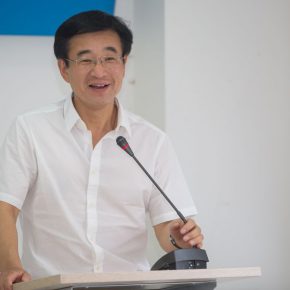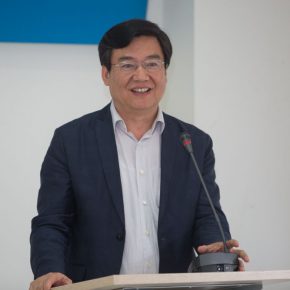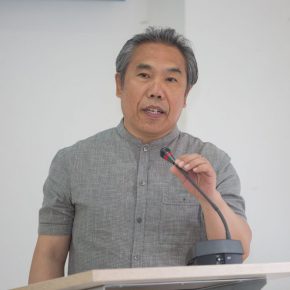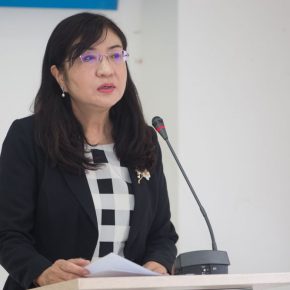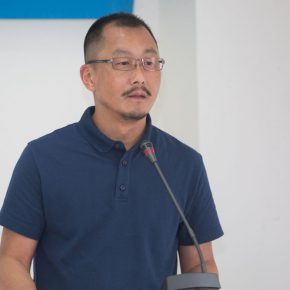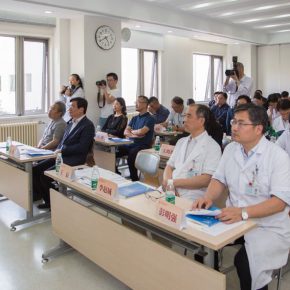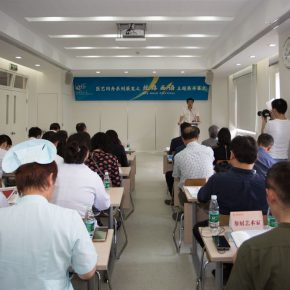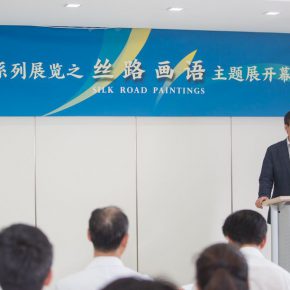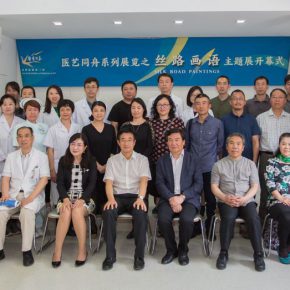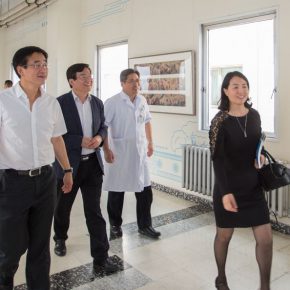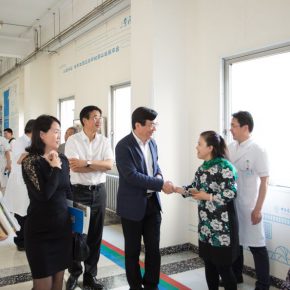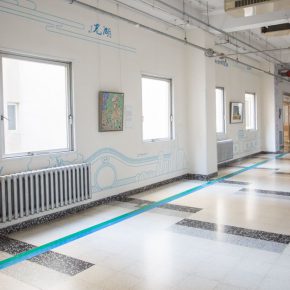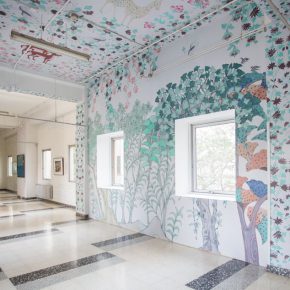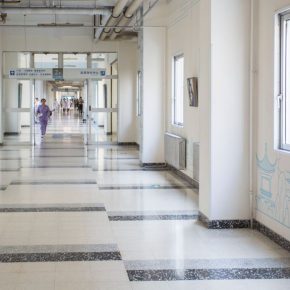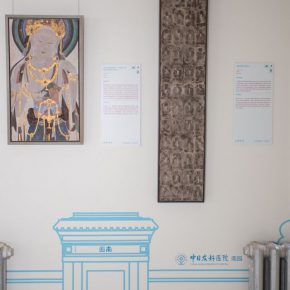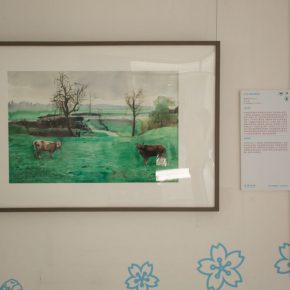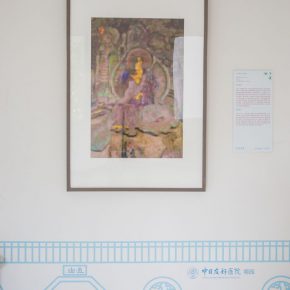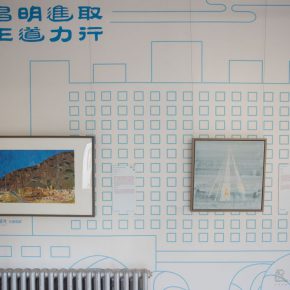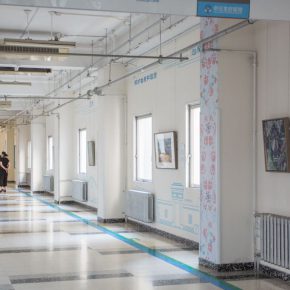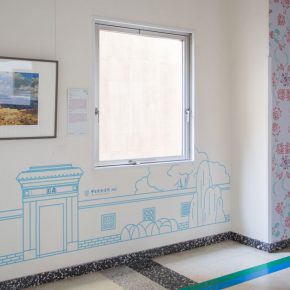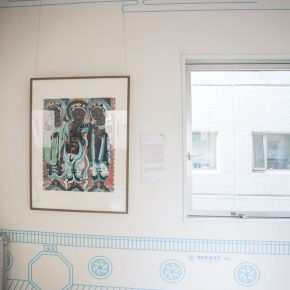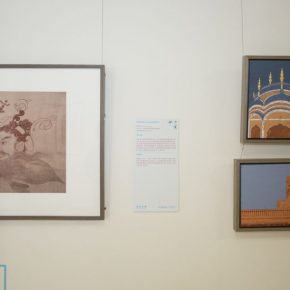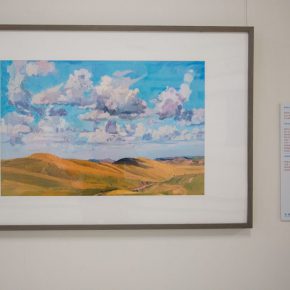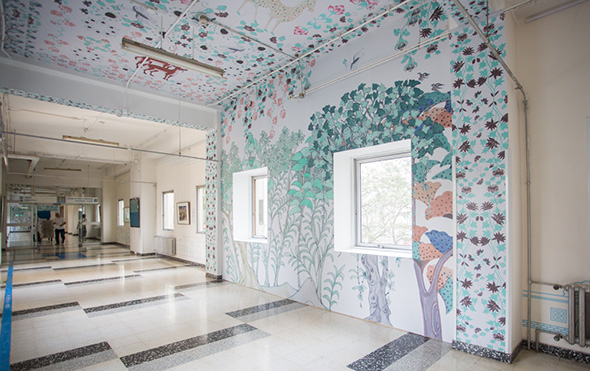
On the afternoon of May 9, 2017, jointly hosted by CAFA and China-Japan Friendship Hospital, “Medicine and Art are in the Same Boat” series of exhibitions are in the 3rd round – “Silk Road Painting” was held in the cultural corridor of the China-Japan Friendship Hospital. It is themed on the “Silk Road Painting”, aimed at the works of fine art which are related to Dunhuang to help people to understand the cultural brilliance of the Silk Road and the inspiration of the contemporary art creation, then to experience the essence of art which is interlinked with medicine.
Fan Di’an, President of CAFA wrote in his preface to the exhibition that: “The works can be divided into three categories. Firstly, the selected copies of the murals of Mogao Grottoes in Dunhuang created by several generations of artists from CAFA, so that the audience can imagine the original style of the Mogao Grottoes in Dunhuang by enjoying the works. Secondly, contemporary artists went to the regions along the Silk Road for sketching or creation, revealing their different perspectives and unique styles. Because it is limited by the exhibition site, these two types of works are on show as giclee prints, after obtained the artists’ authorization. Thirdly, the original pieces of the rock color created by the young artists from the Rock-Color Senior Training Class at CAFA, which are the new rock-color works are copied or created by the young people who followed the Silk Road to study. These works are both tributes to the art of Dunhuang, and are a response to the current “Belt and Road” national strategy in the artistic creations.
For the significance of the holding of an exhibition in the hospital, as well as the significance of art in medicine, Wang Chen, President of the Sino-Japan Friendship Hospital addressed the opening ceremony and said that medicine healed people’s bodies while art healed the mind. When the medicine was combined with art, it made people receive the “physical and mental health”. The primary responsibility of medical workers is to care for patients, and also offer humanistic care to patients, which is poor in a large number of hospitals in China. It is said that “If one wants to be a great doctor, he/she must study humanities”, holding an art exhibition in the hospital “can bring spiritual comfort and humanistic care to patients, so that patients can optimistically face diseases”, and improve the human compassion of the medical staff, which is of great significance.
Party Secretary of CAFA Gao Hong delivered a speech on the state which is commonly pursued by doctors and artists. He said that there were works of Dunhuang art themed on the stories of practices and reincarnations of Sakyamuni Buddha before he established Buddhism, which conveyed the philanthropic thoughts and the pursuit of the fine realm to people, which coincided with the purpose of the doctors which is aimed at healing all living creatures and a career in pursuit of human health, while the artists and doctors also commonly pursue “the true, the good, and the beautiful”. The exhibition combines the realms pursued by the hospital and the art, jointly promotes the successful development of the two human civilizations of art and medicine.
Deputy Party Secretary of CAFA Wang Shaojun also attended the exhibition and delivered a speech on behalf of the artists. Wang Shaojun had feelings on the “Medicine and Art are in the Same Boat” Series of Exhibitions and felt he profited from the show. Art is everywhere in life, and he begins to think of how artworks serve more people, how art makes a contribution to medicine and society.
In addition, Wang Lingling, Deputy Secretary-General of the Chinese Hospital Association, Wang Chuan, Director of the Department of Development and Planning at CAFA also delivered a speech at the opening ceremony. Wang Lingling delivered a speech on behalf of the Chinese Hospital Association, which revealed that the art and humanities played an indispensable role in the treatment, and the medical field attached great importance to the exhibition. Wang Lingling said that the catalog of the exhibition was printed in advance, and participants information was given to the honored guests who participated in the “China-Central and Eastern Europe State Hospital Cooperation Union the First General Assembly for All Members” in Nanjing, hosted by the Chinese Hospital Association on April 27; in this series of exhibitions, Prof. Wang Chuan was invited by Yue Jieqiong, Director of the Collaborative Innovation Office of CAFA, to design the logo for the “Medicine and Art are in the Same Boat” series of exhibitions. Wang delivered a speech and said that the magnificent Dunhuang art was instantly integrated into a specific field, with specific audiences, which had an extraordinary significance, and he would continue to think and strive for the creation of art and medicine.
Director of the exhibition, Yue Jieqiong specially guided the honored guests to visit the show. The cultural corridor started from a jet drawing performing part of the building of a Dunhuang mural painting, with five decorative belts running through classical patterns of Dunhuang, to guide the audience walk through the corridor, crossing the space that is decorated to a cave, and then stop at the wall covered by flowers and plants showcasing a prosperous and vivid life. It is meaningful that the works are on shown in such a corridor. The famous artist Saone Chang offered a great support to the exhibition, and the inkjet of patterns of plants and animals, filled with vitality for the cultural corridor were redesigned and finished by the designer Wu Fan, linked with Saone Chang’s works.
Life and Taoism is the topic that the medicine and art can never bypass, the so-called “Medicine and Art are in the Same Boat” refers to whether someone is a doctor or an artist, it is necessary to think of life, to pursue the Taoism when being dedicated to the job, to promote human civilization moving forwards.
Text by Zhong Yuwei, translated by Chen Peihua and edited by Sue/CAFA ART INFO
Photo by Hu Sichen/CAFA ART INFO


